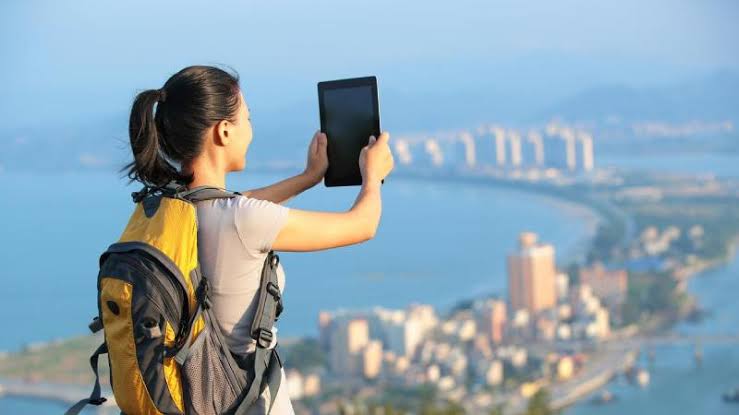The impact of tablets on travel and tourism has been transformative, enhancing convenience, personalization, and interactivity across every stage of the travel journey. From planning to exploration and content sharing, tablets empower tourists with tools that were once only available through multiple devices or services
In recent years, tablets have significantly reshaped the way travelers plan, experience, and share their journeys. As lightweight, portable, and powerful devices, tablets bridge the gap between smartphones and laptops, offering convenience and functionality that cater specifically to the needs of modern-day tourists. Their influence extends across multiple aspects of the travel and tourism industry, from booking accommodations to enhancing in-destination experiences. As of June 2025, tablets continue to play a vital role in promoting efficiency, accessibility, and engagement across global tourism sectors.
Changing the Way Travelers Plan Trips
Tablets have revolutionized the planning phase of travel by providing users with large, touch-responsive screens ideal for browsing travel content, comparing flights and accommodations, and exploring destination guides. Travel apps optimized for tablets allow users to make detailed itineraries, view maps, read reviews, and make reservations—all in one streamlined interface.
Because tablets offer better screen real estate than smartphones, travelers are more likely to engage deeply with visual content such as photos, videos, and interactive booking platforms. Many travelers now rely on apps like Google Travel, TripAdvisor, Airbnb, and Expedia for their research and decision-making processes. These platforms, when accessed on tablets, offer a user-friendly interface that supports side-by-side comparison and quick navigation, which is ideal for organizing multi-leg trips or group travel plans.
Tablets as a Digital Concierge
In hotels, resorts, and airports, tablets are increasingly being used as digital concierge systems. Some modern hotels now place tablets in guest rooms to allow visitors to control lighting, air conditioning, and entertainment, while also providing access to room service, local event listings, and activity recommendations. This form of smart integration not only enhances guest satisfaction but also streamlines service delivery for hospitality providers.
Airlines and airport lounges have also adopted tablets to improve customer experiences. Travelers can use these devices for self-check-in, real-time flight updates, and airport navigation. Moreover, travel hubs use tablets to collect customer feedback instantly, offering valuable insights into service performance while reducing reliance on paper-based processes.
Enhancing In-Destination Navigation and Discovery
During the actual journey, tablets serve as essential tools for navigation and discovery. Travelers can access real-time maps, GPS tools, and public transport apps that make it easier to explore unfamiliar environments. Apps such as Google Maps, Rome2Rio, and Citymapper work seamlessly on tablets, offering greater readability and interactivity, especially when users need to multitask or look up large routes and schedules.
For tourists exploring cultural sites, many museums and landmarks now offer tablet-guided tours. These devices provide interactive content including audio guides, virtual reality reconstructions, and multimedia storytelling, which makes visits more engaging and educational. Such tools are especially helpful for international travelers, as tablets can easily switch between languages, allowing for a more inclusive experience.
Boosting Connectivity and Work-Travel Flexibility
As remote work and digital nomadism rise, tablets have become indispensable tools for travelers who need to stay connected with work while on the move. Equipped with detachable keyboards and compatible with cloud-based apps, modern tablets serve as portable workstations. Business travelers often use them to attend virtual meetings, send emails, and manage documents without needing a bulky laptop.
This level of connectivity enables longer travel durations without compromising productivity, contributing to the growth of "workcations" and extended leisure travel. The tourism industry is responding by offering tablet-friendly environments—cafes with charging stations, accommodations with ergonomic setups, and travel packages that cater to tech-savvy consumers who balance work and play.
Tablets and Social Media Storytelling
Tablets also play a central role in the storytelling aspect of tourism. With high-quality cameras, editing software, and content-sharing apps, they allow users to document and share travel experiences in real time. Tourists can upload photos, write blogs, create travel vlogs, and maintain interactive journals directly from their devices.
Influencers and travel content creators often favor tablets for quick editing of videos, curating digital albums, or live-streaming experiences. This kind of engagement has a ripple effect on the tourism economy, as visually appealing travel content encourages others to visit the same locations. Destinations, therefore, benefit from the organic promotion that tablets facilitate through user-generated content.
Sustainable Tourism and Paperless Travel
The shift to digital platforms driven by tablets supports environmentally conscious travel practices. Boarding passes, hotel bookings, and travel insurance documents can now be stored and presented digitally, reducing the need for printed materials. Tourists can use e-readers on tablets instead of guidebooks and printed maps, which contributes to waste reduction.
Tourism companies, airlines, and travel agencies are increasingly promoting digital documentation not just for sustainability but also for convenience and safety. In a post-pandemic travel landscape, contactless services remain in demand, and tablets are instrumental in enabling that functionality through QR codes, digital signatures, and app-based check-ins.
Driving Accessibility and Inclusivity
Tablets also offer accessibility features that help travelers with disabilities enjoy seamless tourism experiences. With screen readers, adjustable font sizes, and voice-control functions, these devices assist users with visual, auditory, or mobility impairments. Some travel apps now offer guided support and adaptive features specifically designed for people with varying needs, allowing broader participation in tourism activities.
Hotels, transportation providers, and cultural institutions that integrate tablet-based services into their infrastructure improve overall accessibility and compliance with inclusive tourism goals. This not only widens their customer base but also supports the broader mission of equal travel opportunities for all.
